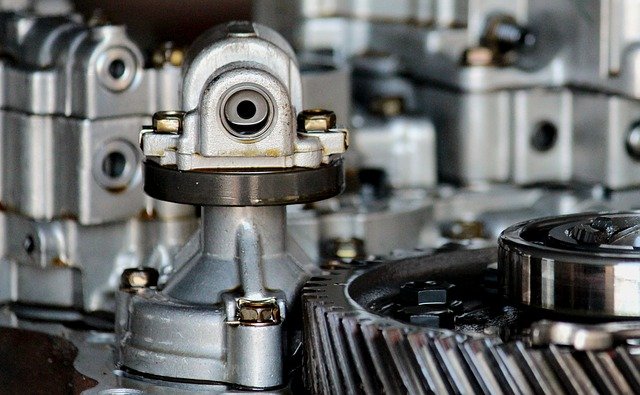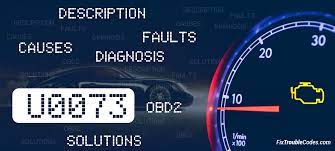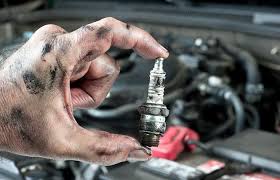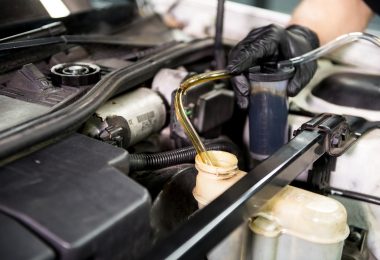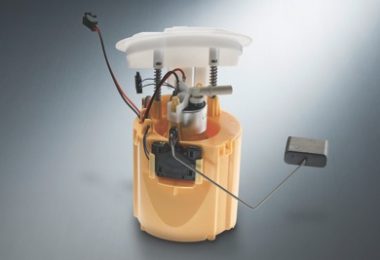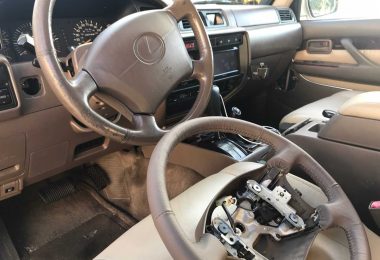There is no component more complex and essential than a car’s transmission. Automatic transmissions are responsible for shifting gears without driver input to change gear ratios in an efficient manner as the vehicle moves forward, freeing the driver from having to shift gears manually.
Transmissions are needed because internal combustion engines always output the greatest amount of power at a high rotational speed. At this high rotational speed, it is impossible for this high power to be driven to the wheels to be used for acceleration, low speeds or starting.
Using gear ratios, an automatic transmission reduces the engine’s rotational speed and increases the torque (or “power” to the wheels) in the process, using a torque converter as a fluid coupler.
Basic repair jobs are on the lower side, from $300 to $1400. For example, fixing a manual transmission only requires a new clutch, a $800 to $1500 job.
Another Name for Transmission and Function
A transmission or better called a gearbox is an integral part of every internal combustion engine. Without transmissions, there wouldn’t be any cars on the road. Or if there were cars, driving them would not be possible as a result of no transmission or gearbox.
The transmission performs all the magic in torque delivery. The transmission converts the rotational energy made in the crankshaft into torque energy that helps you move your car from a standstill.
This energy is properly applied onto the road, and the transmission makes sure that there is no power loss. In short, the transmission is helping you deliver smoother shifts at the right RPM levels that avoid overloading the engine and prevent it from wasting fuel. The transmission is what makes sure power is distributed among the tires properly. And when you shift gears, the engine and transmission disconnect to adjust to a new drive position. With an automatic transmission, it senses this change and automatically adjusts the torque distribution in order to create a smoother acceleration when you step on the gas. It is important to note that more gears mean a smoother ride.
Some Factors that Affect the Cost
The cost of transmission or gearbox repair varies widely based on a number of factors, the most important of which is the type and extent of the repairs that would be carried out by the mechanic.
If the transmission needs to be completely replaced or rebuilt, on this account you are expect to pay several thousand dollars for parts and skilled labour, while a few minor repairs and a fluid change will only be a couple hundred dollars.
Make
It also depends on the make of the vehicle, with US domestic models such as GM, Ford, and Chrysler generally cost less than imported vehicles such as BMW, Mercedes and Volkswagen.
Extent of the Damage
The extent of damage in the transmission goes a long way to determine the cost of repairing a transmission. The cost of price as newer cars that have been well maintained will cost less than those ones that have been showing signs over time.
Old and New
Considerably older or rarer cars are harder to find parts for, which also increases the cost. Therefore, availability of the Transmission parts has effect on the cost of repairing.
Manual and Automatic
Manual transmissions generally cost less to repair/replace than automatic transmissions. This is because of the nature and is make-up. Some shops charge higher prices than others for the same work (due to brand, location, reputation, etc.)
Location
Finally, the car’s location will contribute a great deal to the overall cost of the procedure. Areas with higher costs of living, higher demand of services and/or lower availability of skilled technicians will charge higher hourly labour costs, escalating the overall price.
7 Factors That Shows Transmission Repair is Needed
Not all car owners have the basic knowledge for identifying car troubles before they get too late. But the key to car troubles is catching them before they are beyond control. Otherwise, you will be plagued with very expensive transmission repair costs.
Understanding transmission repair costs is important for any vehicle owner. It’s a good idea to pay attention to your car and notice if anything ever seems different. If any of the signs for a malfunctioning transmission appear, it’s time to get your car to a transmission repair shop right away. What are some of these signs? The following are 7 signs that are important to look out for, which tells you that the transmission repairs are needed your car:
Gears are slipping
When you are driving and the car feels like it is shifting into another gear for no reason at all, you are experiencing a slipping transmission. Along with a whining noise, this slippage is associated with a decreased level of transmission fluid and lack of ample maintenance. This will result in damage to the transmission system and will quickly develop into worse issues, such as overheating, that will require immediate and costly repairs of your car’s transmission.
Try testing the level of the transmission fluid using a dip stick every time you drive (especially for long-distance trips). This will help you know if you need to add fluids to get to your destination without burning up the engine. Plus, you do not have to spend a lot of money on checking the levels with a dipstick. It is a practical step in preventing expensive transmission repair jobs.
You might also simply need a transmission flush to clean it out. This is highly recommended maintenance to avoid needing to completely rebuild or replace your transmission and can cost anywhere from $150 – $200.
Shifting gears is too difficult
Have you noticed a change in your car’s behaviour when shifting your gears? Does it take a little more effort and patience to get your vehicle into a specified gear? This could be a sign of transmission troubles. Again, testing your fluid levels and topping them off before driving is a quick fix that can prevent more expensive transmission repair costs or getting your fluids flushed.
Keep this in mind please: your transmission will surely experience overheating if the transmission fluid cannot flow freely to the rest of the working or moving parts of the engine. The fluid is responsible of lubricating the parts and cooling them off when they have reached a higher temperature. This could mean a transmission problem is brewing.
Car Doesn’t Move When Put Into Gear
Have you ever experienced that moment when your car does not move when you put it into a specified gear? Well, just as with other gear problems, if your car is not driving when put into drive or reversing when put into reverse, you are facing a transmission problem. Again, check your transmission fluids to seem if simply flushing them or refilling them is all you need.
Burnt Smell in Your Car
If there is a burnt smell in your car, this indicates that a transmission repair is needed. And if you ever smell a burnt aroma while driving, then, by all means, stop the car as soon as you can. Again, this could indicate leakage or low levels of transmission fluids, but that the fluids have gotten so low that the engine is overheating.
A burnt smell could further indicate that the leak is too large to simply add fluids each time you drive. If a transmission fluid leak is a large one, then your fluids will probably leak out before reaching your destination, and you are left again with the burnt smell and the engine overheating.
Fluid Leaking Out of the Engine
Leaking fluids is a big problem for your car’s transmission. Eventually, the damage may involve the other working parts of the system. If you are seeing a red, green, or yellow fluid beneath the vehicle, you are most likely experiencing a transmission fluid leakage. The primary source of this leak may come from a seal, a cooler line, or a gasket.
If you aren’t sure if the leak is actually transmission fluid, there are other ways to tell. Checking the dipstick to check the level of the transmission fluid is an easy secondary way to tell. If you see a red fluid under the car along with low levels of fluid on the dipstick and other signs of transmission problems, take your car to a mechanic right away.
Dashboard Warning Lights
First and foremost, you should check the dashboard of your car for any alarm lights being turned on. Validate if the “CHECK ENGINE LIGHT” is on. This dashboard light alerts the driver that there is a specific issue in your car. This should not be ignored. However, if this light is on, it does not necessarily indicate that there is a problem with the engine itself. Although many drivers will eventually assume that the engine is in trouble, this is a huge misconception. The light indicator will also be turned on for transmission-related problems, overheating of the transmission, and solenoid issues.
Read More: 12 Important Car Dashboard Symbols/Signs You Must Know
Make sure to get a free diagnostic done by your local parts store right away if any dashboard lights turn on and don’t go away. The dashboard light might be alerting you to the need for a transmission repair service immediately.
Humming or Whirring Noise
Any buzzing sound coming from your vehicle is not normal at all. This sound could be coming from your car’s transmission which is experiencing faulty bearing and bad gears. Or the decrease in transmission fluid from a leak might lead to that weird humming sound. If you hear a weird noise coming from your engine, be sure to take it to a professional mechanic right away to avoid further, more costly repairs.
A Clogged Fluid Filter
While transmission fluid is essential to keeping your transmission running smoothly, BAD/DIRT transmission fluid can cause trouble for your engine. This is why car manufacturers outfit transmissions with a filter, which keeps the fluid clear of debris or dirt. However, over time this filter can become clogged up – and when that happens, no fluid will be able to get through. These issues can lead to serious damage and a potential transmission rebuilds, but they can easily be fixed if you catch them early enough. It’s important to pay attention to your car and service it when you start to notice that disorderliness.
How to Prevent my Transmission From Damage?
Preventing transmission damage is easy. You only have to do the regular service on it. Make sure that you replace the transmission fluid regularly. This will guarantee that your transmission will not last for a long time.
Also, avoid overloading your vehicle. Overloading puts a lot of stress on the transmission and it will possibly damage the transmission and will make it work poorly. It will start to shudder and slip gears. These will lead you into rebuild and search for how much it costs to rebuild a transmission. So, do not do all of these we have mention that will push you into searching for mechanic and trying to know cost of transmission.
Can I Keep Driving my Car Without a Repair?
It is not advisable to keep driving such a car. But you cannot know for how long it is going to last. The transmission may suddenly fail and you won’t even be able to move the vehicle at all. That’s why it is a smart idea to repair this problem when you first notice it and make sure that it’s sorted out as soon as possible to avoid embarrassment.

